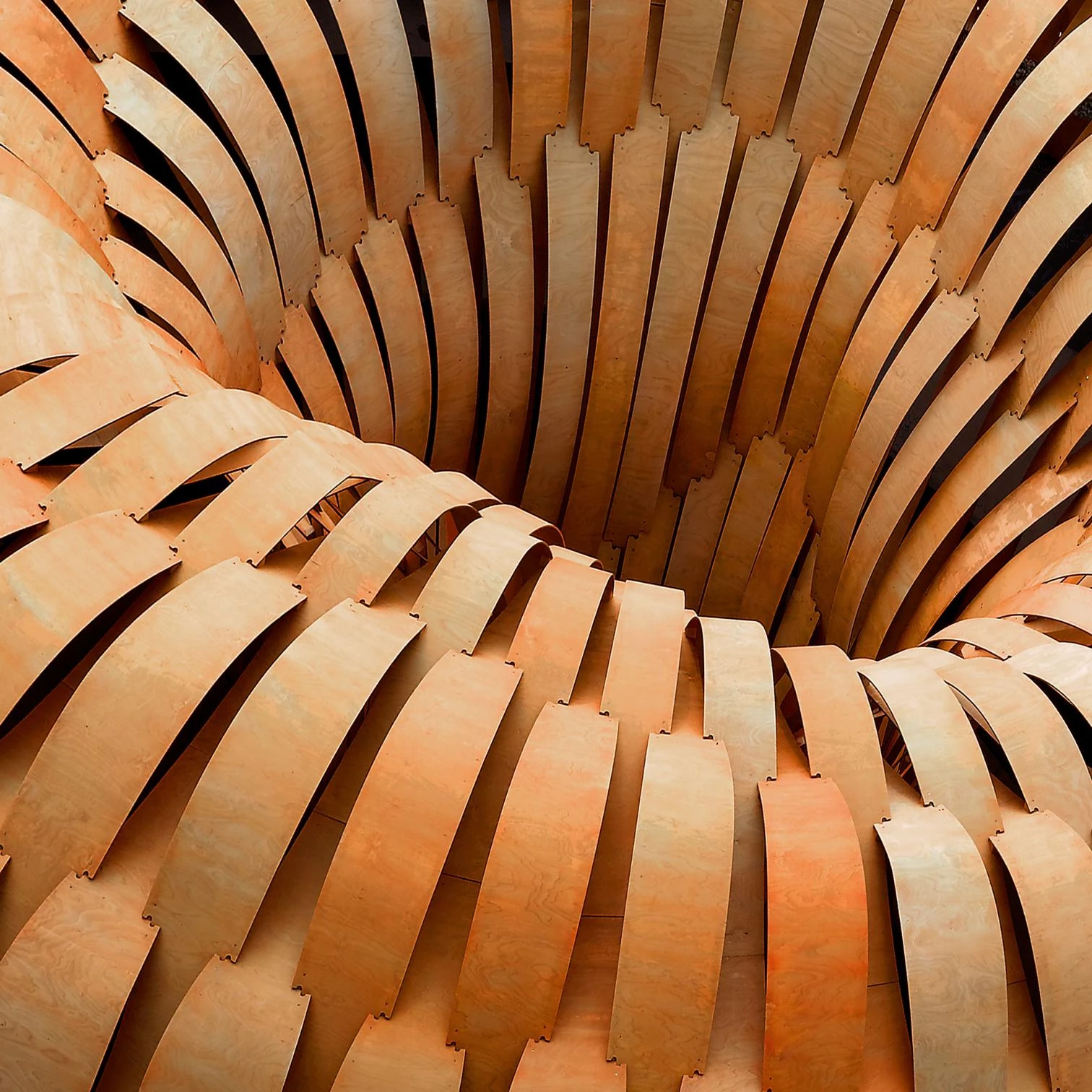
Wood, more wood! The technique of construction calls for more wood due to its structural efficiency and its malleability in experimental uses; the ethics of nature demands more wood on account of its condition of renewable resource and its easy recycling: and the aesthetics of perception claims for more wood because of its warmth to the touch or the eye and its evocation of origins or beginnings. If the Vitruvian triad is still useful to weigh up the world, the firmitas of wood is present in the excellent behavior of its frames, light and resistant at once; its utilitas resides in its sustainability, which has turned it into the favorite material of the green movement; and its venustas must be found in the empathy aroused by a biological texture marked by the memory of its growth. The pure reason of calculus, the practical reason of morals and, last but not least, artistic judgment, all coincide in praising the virtues of humble wood.
“Wood has come back, though it never went away”. Fifteen years ago we devoted an issue (Arquitectura Viva 48, May-June 1996, ‘De madera’) to this timeless material, drawing attention towards the inevitable paradox of speaking about its comeback when it was still used in all the geographies and climates of the planet, and towards how questionable it was to continue using that conventional name when it had become an almost entirely artificial product: “Thus, neither is it coming back nor is it wood proper”. But at the same time we already underlined how the material was in tune with the increasing environmental awareness, and placed on record that if postmodernism was petreous and solemn, and if deconstructive grammar was made with diagonal glass sheets and metals held by sculptural concretes, “the new sobriety of the present times of silence resorts to the laconic language of wood”.
In fact, thinking it over, neither does wood seem to be fully incompatible with classicism or dislocated geometries, as shown by traditional structures or the theatrical frames of constructivists, nor does minimalist abstraction express itself only with wood, because its favorite materials have actually been glass and steel. If today, many years later, we acknowledge a renewed popularity of wood, the cause must be found perhaps in its ecological virtues and in the technical advances that allow using it efficient and economically in a great variety of circumstances. These advances, that came mainly from the field of chemistry in our earlier issue, now come, in the most singular experiences, from computers, which are transforming the treatment and use of wood in construction just as they are changing the whole architectural scene. We need more wood, but we shall use it as a digital material.





